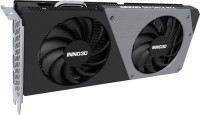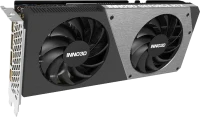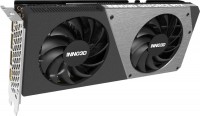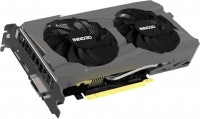INNO3D GeForce GTX 1660 TWIN X2 (N16602-06D5-1510VA15)
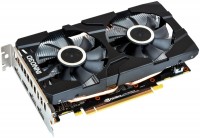 | Outdated Product £296.88 One of the affordable models of mid-range gaming graphics cards in 2019 from the Nvidia GeForce GTX 1660 family, whose products are focused on use in low-cost gaming systems and multifunctional home PCs. In addition, it can be an excellent choice for a cost-effective upgrade of an existing gaming setup. In addition to the affordable cost, it has a moderate energy appetite (120 W). The ability to work stably with inexpensive power supplies with a power of 450 W or more. The INNO3D GeForce GTX 1660 TWIN X2 graphics card is based on a combination of the Nvidia TU116 GPU (12 nm, Turing microarchitecture) with high-speed GDDR5 graphics memory (6 GB, 192-bit). Massive GPU processing power, adaptive shading technology, and a new unified cache architecture with double the usable capacity allow it...to outperform previous-generation GeForce GTX 1060 (6GB) and AMD Radeon RX580/590 cards. This model will easily provide a consistently high frame rate in any popular game projects of 2015-2020 in FullHD resolution at high or maximum graphics settings. |
INNO3D GeForce GTX 1660 TWIN X2 | ||||||||||||||||||||||||||||||||||||||||||||||||||||||||||||||||||||||||||||||||
|
| |||||||||||||||||||||||||||||||||||||||||||||||||||||||||||||||||||||||||||||||
One of the affordable models of mid-range gaming graphics cards in 2019 from the Nvidia GeForce GTX 1660 family, whose products are focused on use in low-cost gaming systems and multifunctional home PCs. In addition, it can be an excellent choice for a cost-effective upgrade of an existing gaming setup. In addition to the affordable cost, it has a moderate energy appetite (120 W).
The ability to work stably with inexpensive power supplies with a power of 450 W or more. The INNO3D GeForce GTX 1660 TWIN X2 graphics card is based on a combination of the Nvidia TU116 GPU (12 nm, Turing microarchitecture) with high-speed GDDR5 graphics memory (6 GB, 192-bit). Massive GPU processing power, adaptive shading technology, and a new unified cache architecture with double the usable capacity allow it to outperform previous-generation GeForce GTX 1060 (6GB) and AMD Radeon RX580/590 cards. This model will easily provide a consistently high frame rate in any popular game projects of 2015-2020 in FullHD resolution at high or maximum graphics settings.
Before buying always check characteristics and configuration of product with online store manager
Catalog INNO3D 2025 - new products, best sales and most actual models INNO3D.


New bestseller
The Inno3D GeForce GTX 1660 Twin X2 is a new NVIDIA Turing architecture graphics card with a solid 6 GB of memory at a reasonable price. However the memory used is the old GDDR5 model, instead of the new GDDR6, and this is the main difference from the GTX 1660 Ti. By the way, video memory is actively used not only in games, but also during video editing. The most voracious programme in this regard is Adobe After Effects (using CUDA and NVENC technologies).
Rays are and are not
The GeForce GTX 1660 is built on the TU116 chip: 1408 stream processors, 88 texture units and 64 render units are available. But there are no tensor and RT cores, this is a privilege of the 2000-series models. However, ray tracing is still implemented, though not using NVIDIA RTX technology, but using DirectX Raytracing (DXR).
smart rendering
The latest technology available only to Turing-based graphics cards is NVIDIA Adaptive Shading (NAS). In order to increase the frame rate in games, it draws as detailed as possible only important objects on the screen (for example, a car), and background objects (road, nature) are less detailed. The increase in FPS after activating the NAS is approximately 10 percent.
Silence and acceleration
Compared to the reference, the modified Inno3D GeForce GTX 1660 Twin X2 stands out with a dual-fan cooling system that quietly removes 120W of heat. The base core frequency is 1530 MHz, auto overclocking is 1785 MHz. It is not difficult to reach the mark of 2050 MHz by manually forming the frequency. Video memory can also be overclocked from 8000 to 9500 MHz. All these manipulations add up to 10 percent of free FPS in games. And taking into account NAS technology, the total increase can reach 20 percent.







